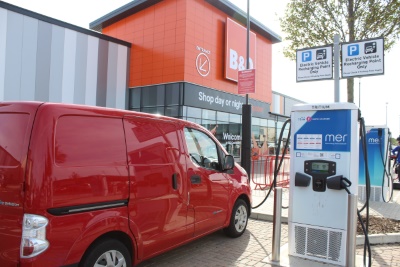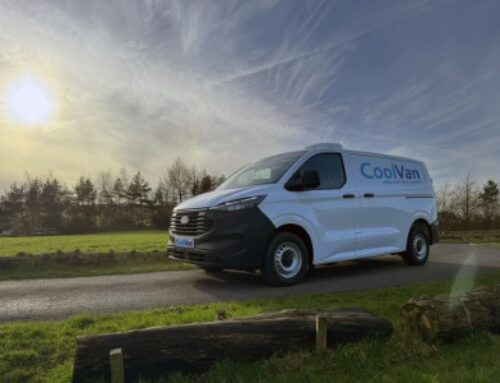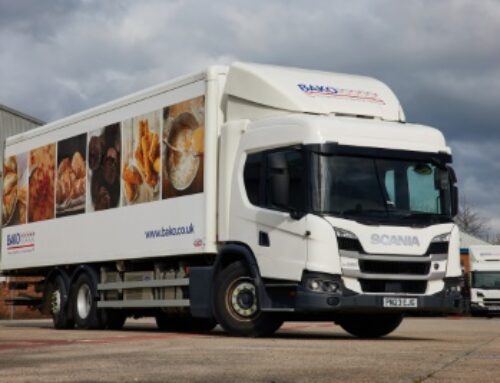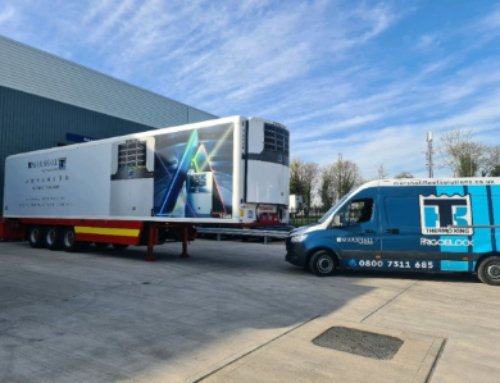Electrifying last mile deliveries
 Natasha Fry, head of sales at charging specialist Mer, has co-authored a new guide to help last mile fleets avoid key EV pitfalls
Natasha Fry, head of sales at charging specialist Mer, has co-authored a new guide to help last mile fleets avoid key EV pitfalls
As companies that manage last mile deliveries look to install an EV charging infrastructure for their fleets, they often face a conflict between their ambitious electrification goals and the reality of power availability.
At Mer, we’ve seen what happens when a business focuses on how to switch its existing fleet to EVs without factoring in the challenge of how to charge them. With that in mind, we have produced a new guide – ‘Delivering on Your EV Goals’ – to help last mile logistics managers properly understand the process and ensure that their fleet electrification plans don’t get stuck in a bottleneck.
To run an effective last mile logistics business, data is king. Being armed with the right information on EV charging will ensure that you make evidence-based decisions about electrifying your fleet and avoid costly mistakes.
The fact is that delivery fleet managers are very data-driven when it comes to identifying which vehicles can be electrified and the best way to optimise these assets. You need to start taking the same analytical approach to the charging infrastructure and plan how to charge the vehicles. Chiefly, this involves understanding how much power is needed and where it comes from.
Without a true understanding of the power availability at each depot, and the cost implications of any necessary grid upgrades, the roll-out of last mile EV delivery fleets risks being delayed while budgets are revised upwards.
It all starts with a site survey. In our experience, no two sites are the same. Site surveys at every depot are ideal to gain a proper understanding of what power is currently available, what will be required, how to bridge any gaps by upgrading the site infrastructure, and what that involves.
Putting the legwork in upfront saves time and money further down the line to ensure that corporate electrification objectives are met at each site.
 Inevitably, upgrading grid connections comes at a price and takes time. Understanding that in the early stages means you go into it with your eyes open. Some last mile logistics operators will be prepared to increase budgets to meet existing targets, while others might prefer to take a more phased approach starting with ‘low hanging fruit’ for a quick win to prove the concept.
Inevitably, upgrading grid connections comes at a price and takes time. Understanding that in the early stages means you go into it with your eyes open. Some last mile logistics operators will be prepared to increase budgets to meet existing targets, while others might prefer to take a more phased approach starting with ‘low hanging fruit’ for a quick win to prove the concept.
We recognise the need to take a pragmatic approach to win support in the boardroom for what will be a big undertaking for any business.
Mer’s free guide covers the importance of including each depot’s energy capacity as a metric when setting fleet electrification targets. It also explains how to calculate power availability and the solutions to overcoming grid limitations.
Other steps in the guide include: identifying whether fast or rapid chargers will best suit your last mile EV needs; handling procurement; getting installation right first time; and minimising charger downtime for mission critical EVs.
‘Delivering on Your EV Goals: A guide to EV charging for last mile logistics operators’ is available from the Mer website, at uk.mer.eco/ev-charging-last-mile










